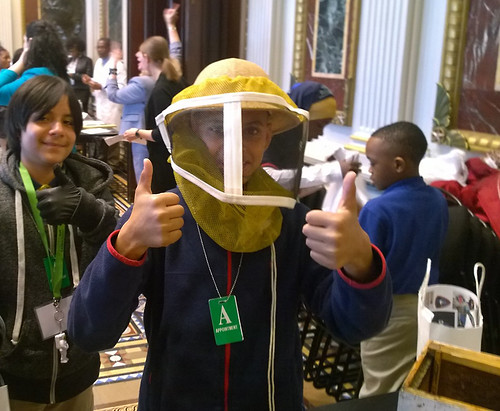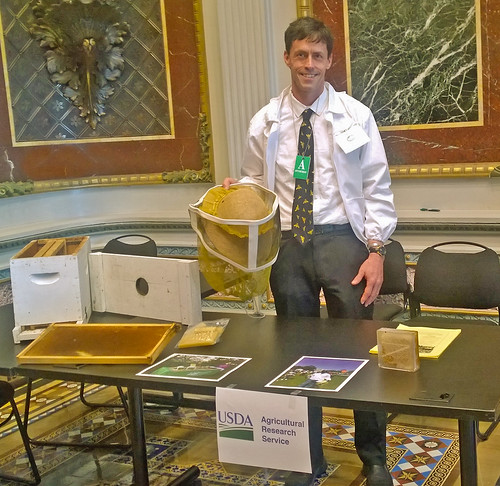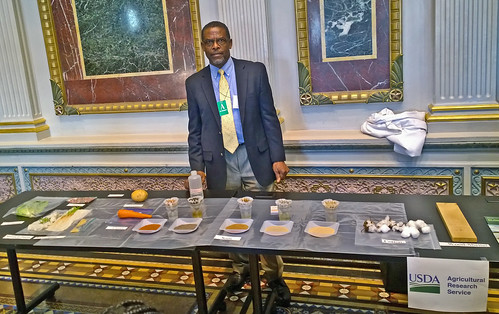
Students from Baltimore and Washington, D.C. schools try out different scientific careers like ARS bee researcher at the White House Day at the Lab.
“Whoa! Do you have bees in there?” is not something the Secret Service asks every day, even of scientists when they come to the Eisenhower Executive Office Building, which sits next to the White House West Wing and houses most of the staff offices.
It was just a month ago that agronomist Eton Codling, from the Agricultural Research Service (ARS) Crop Systems and Global Change Lab, and I, research leader of the ARS Bee Research Lab, were on our way into the White House. We were there to represent USDA at the White House Day at the Lab to give young students a taste of exciting science careers they may never have considered or even known about otherwise.
About 70 eager sixth, seventh and eighth graders from Washington, D.C. and Baltimore schools had the opportunity to spend the day doing experiments, being inspired by hands-on activities and the chance to ask questions of real working scientists from Federal agencies.
At my bee station, groups of students learned what I, as an entomologist, am doing to help make honey bees healthier and how scientists and beekeepers can safely work with bees. They also got to become familiar with bee wax and a beekeeper’s tools. The enthusiastic students wanted to know how much honey each bee can collect, why a queen bee is different if all worker bees in the colony are also female, and how many times I had been stung.

Entomologist Jay Evans, ARS Bee Research Lab, sets up a table of bee wax and bee-working tools at the White House Day at the Lab, where students had the chance to try being different types of scientists.
And at Dr. Codling’s soil table, the students were fascinated by changes in the color of pH strips, which tell how acid a liquid is, as they dipped the strips in water after they had been run through different types of soil. The students said they knew food was grown in soil, but they had never been taught how soil affects so many things—such as the fact that the air we breathe is changed by the plants that grow in the soil, and by the animals we eat that feed on the plants that grow in the soil. Everything is interconnected through the soil, and we need to stop treating it like dirt.
The White House Day at the Lab was held in coordination with My Brother’s Keeper—a program President Barack Obama launched two years ago to address persistent disadvantages and to ensure boys and young men of color have opportunities to reach their full potential—and with the White House Council on Women and Girls. It kicked off a week of similar events for students at Federal labs across the country.

Agronomist Eton Codling, ARS Crop Systems and Global Change Lab, is ready to teach students about different types of soil at the White House Day at the Lab.
No comments:
Post a Comment
Note: Only a member of this blog may post a comment.